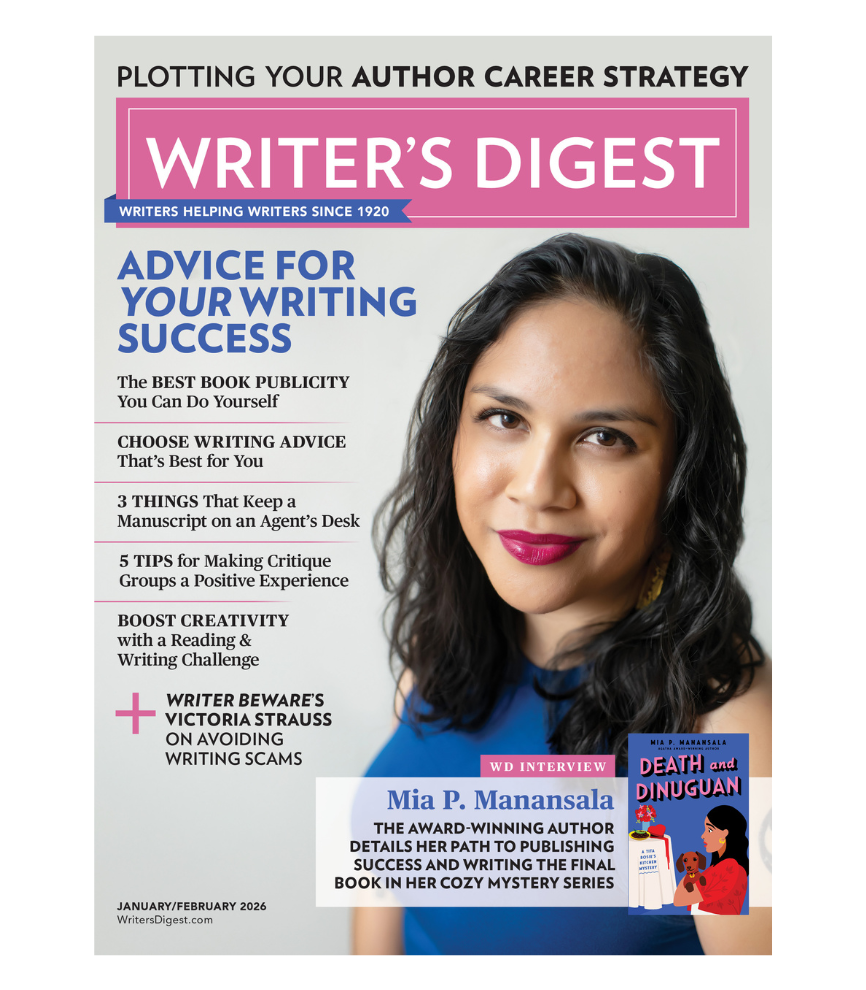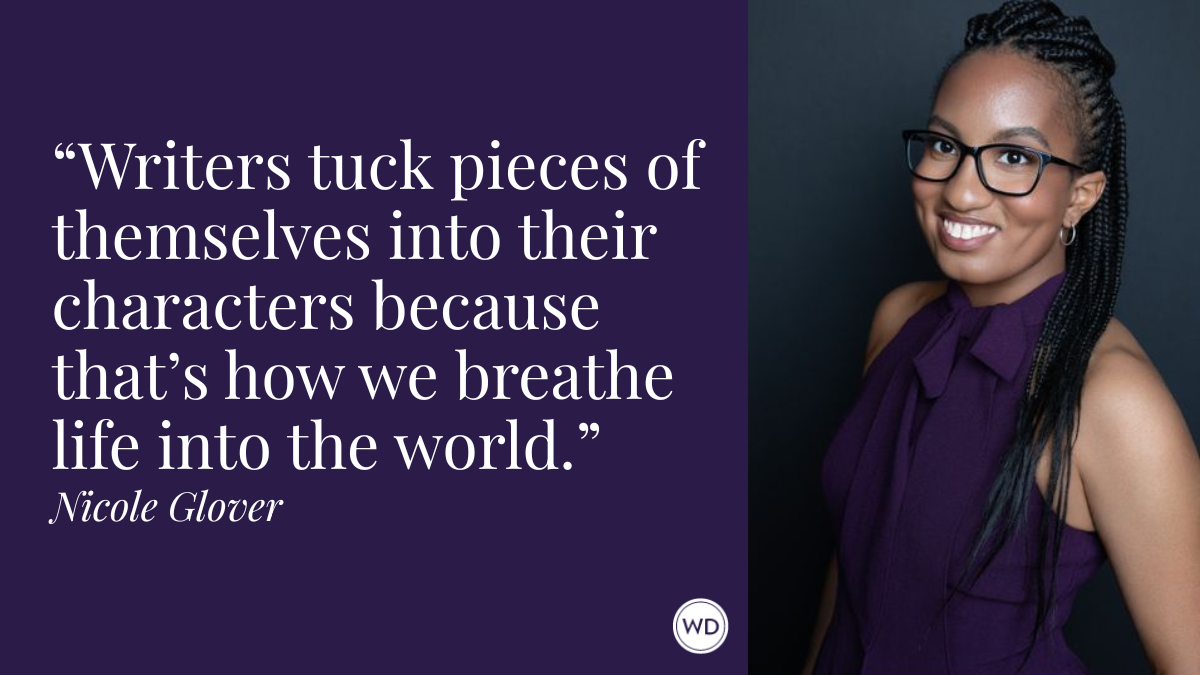Clowns to the Left, Jokers to the Right: What to Do When You’re Stuck in the Middle of Your Novel
Are you stuck writing the middle of your novel? These tips from Gabriela Pereira’s DIY MFA will help you add meat to those core bones of your narrative.
At the Writer's Digest Novel Writing Conference last month, Gabriela Pereira—speaker, podcaster, and author-extraordinaire of DIY MFA—presented an information-packed, eight-hour boot camp on planning, writing, and revising your novel. Her seven-step system is a great way to take your work from nothing to publication (and you can read about it in her book if you missed the boot camp).
According to DIY MFA, a novel's story structure is comprised of three acts and two decision points that allow your protagonist to determine how the story plays out from those two points. One segment of the boot camp that I found particularly helpful was her section on "Muddling Through the Middle"—that is, keeping up your pacing, action, and story while you're writing Act Two of your next great novel. It's a particularly tough area in which many novelists get stuck writing, either because they're not sure how to flesh out the middle or because they've simply reached a lull in the action. This can derail your productivity—or your NaNoWriMo attempt—unless you work through it. As Pereira writes:
If you find yourself getting stuck in the middle, ask yourself, “What is the premise of my story?” The premise is the underlying concept that drives your story. … Some genres have “rules” surrounding the premise—mystery requires a crime, romance requires a love story—but the author can bend or blur these rules to her advantage. Don’t think of story structure as a series of check boxes on a list; formulas can be confining. Instead, look under the hood and tease apart the power struggle or conflict that drives your story.
Therefore, I've selected some of Pereira's tips from her book and the boot camp for ensuring that the middle of your novel is just as engaging as the climax, and that you won't get stuck writing it.
What to Do When You're Stuck Writing the Middle of Your Novel
1. Give your supporting cast more page time.
One particular area for development is the depth of the supporting cast. You love your protagonist, and the overall story arc focuses on her, but Act Two is a great area to flesh out the characters who help her along (or hinder her) on her journey, as well as any potential subplots they're involved in. "In Harry Potter and the Sorcerer’s Stone, we meet all of Harry’s professors and classmates in Act Two," Pereira writes. "In The Hunger Games we get to know Peeta, Rue, and the other tributes participating in the Games. In Pride and Prejudice we meet Wickham and the militia, as well as Mr. Collins, Lady Catherine, and Georgiana Darcy. Act One introduces your protagonist, but it’s in Act Two that the supporting cast comes to life."
Pereira also advises using surrogates to advance your hero's journey. She pointed out that in The Hunger Games, Rue serves as a surrogate for Katniss' younger sister during the games. And for an additional example:
The works of William Shakespeare are filled with surrogate supporting characters. In King Lear, for example, the fool archetype is played by a character named the Fool as well as by Lear’s favorite daughter, Cordelia. Just as the Fool tells King Lear the things he does not want to hear, so, too, does Cordelia when she speaks the difficult truth to her father. In fact—and here’s where things get interesting—the characters of Cordelia and the Fool never appear in the same scene, and in early performances of King Lear the same actor often played both roles.
IndieBound | Bookshop | Amazon
[WD uses affiliate links.]
2. Use the rule of three to move your story forward and give it momentum.
The rule of three is everywhere—in stories, books, movies, TV shows, parables, advertisements, and anywhere else you find even the briefest narrative structure. Three bears, three trials, three inconceivable kidnappers, three wise kings, three tips in this article.
Why is the number three so common? "The number three gives us a feeling of completeness," Pereira explains. "Two is not enough to establish a pattern, and four feels like too many. Three is just the right balance. It sets up a pattern but allows room for a twist in the third repetition."
The rule of three can be added to your own story in myriad ways: Your protagonist can meet three new minor characters, or endure three challenges, or go on three dates with three potential lovers. The hero may fail in the first two, or all, of these instances—perhaps learning valuable lessons along the way, of course—but eventually she'll succeed. (In most cases, that is. A clever writer can subvert this trope in interesting and creative ways.) Pereira offers Pride and Prejudice, which contains more than one instance of adventures in triplicate, as an example: Elizabeth Bennet navigates through three separate courtships (with Mr. Collins, Mr. Wickham, and Mr. Darcy) that all initially fall apart before Mr. Darcy's letter reveals his own character and Mr. Wickham's villainy, earning Elizabeth's respect and romantic interest.
3. Use the midpoint to focus your story.
The midpoint of your novel is a landmark moment in which your protagonist reaches a turning point that carries her to the climax and conclusion of the story. According to Pereira: "As with all of the significant landmarks in your story, the midpoint has two sides: the external event and the character’s internal response to that event."
It is your character's response that informs her decisions throughout the rest of the novel. Pereira notes that the midpoint need not be precisely in the middle of the novel, but that it must occur after the "point of no return"—the moment at which things will never be the same again for your character—and before the major decision point at the end of Act Two.
You can use the midpoint to make the end of the novel a reflection of the beginning, or you can use it to raise the stakes and propel the story toward the transition into the third act. These goals can be achieved either through temporary triumph (in which it appears the protagonist has achieved what she wants) or false failure (in which it feels as if things couldn't possibly get worse for the protagonist—and then they do). "Though they might seem opposite, the temporary triumph and the false failure share a common thread: In both cases, the external events lead to an internal moment where the protagonist must decide how she feels about the person she has become," Pereira writes. "This introspection may be a complete turning point where the protagonist reconsiders every aspect of her personality … [or] a slight shift. … As with any aspect of a good story, the external events need to reflect and contribute to the internal journey that eventually makes the protagonist grow and change."
Jess Zafarris is the Executive Director of Marketing & Communications for Gotham Ghostwriters and the former Digital Content Director for Writer’s Digest. Her eight years of experience in digital and print content direction include such roles as editor-in-chief of HOW Design magazine and online content director of HOW and PRINT magazine, as well as writing for the Denver Business Journal, ABC News, and the Memphis Commercial Appeal. She spends much of her spare time researching curious word histories and writing about them at UselessEtymology.com. Follow her at @jesszafarris or @uselessety on Twitter.







